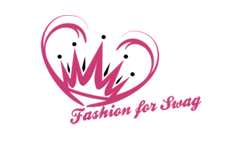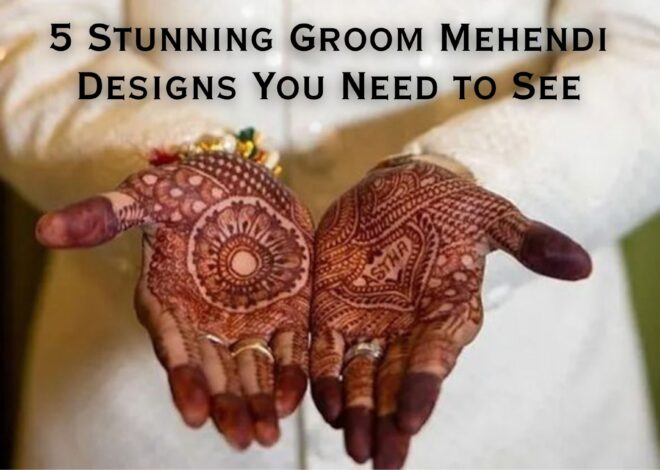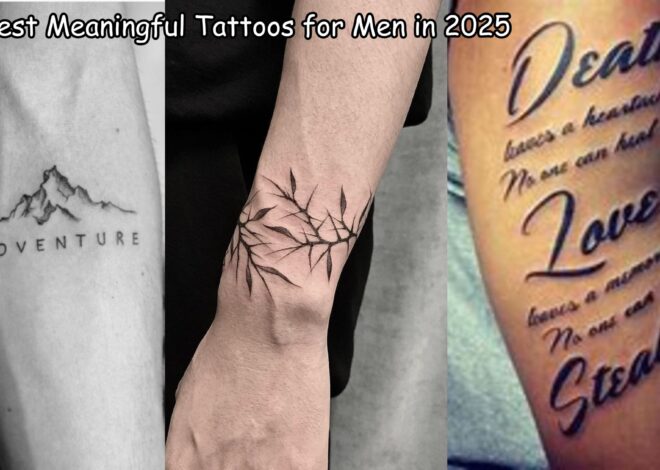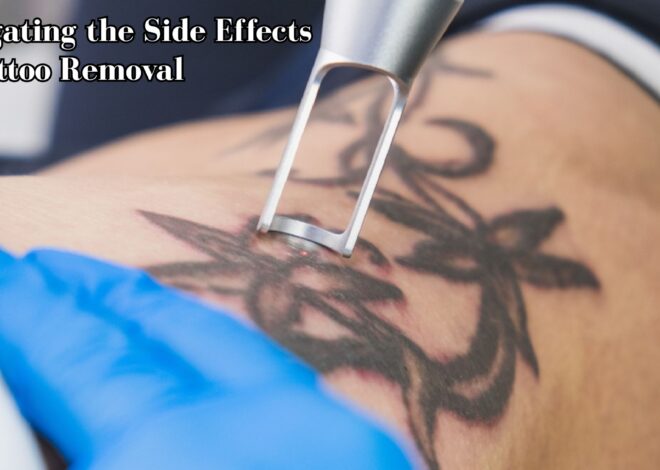
Ghostface Tattoo Ideas: Are You Brave Enough to Go Full Horror?
The horror genre is defined by its ability to harness primal fear, and few modern villains are as iconic, or deceptively simple, as the Scream franchise’s Ghostface. This masked figure, less an identity and more a scary costume worn by various killers, has transcended cinema to become a timeless symbol of meta-horror, paranoia and the terror hidden within the familiar. Choosing from Ghostface tattoo ideas isn’t just about choosing a scary design; It’s a declaration of allegiance to a cultural phenomenon and an embrace of the darker, more introspective side of cinematic horror.
It’s an art choice that poses a fundamental question to the wearer: Are you brave enough to be completely terrified? Fully committing to a Ghostface tattoo means understanding the legacy of the mask, the stylistic options available, and the powerful, lasting statement it makes about your personality and your relationship with fear.
The Enduring Legacy of the Ghostface Mask
Before diving into the ink, it’s important to understand why the Ghostface mask has so much power. Unlike demonic adversaries with elaborate, grotesque faces (such as Freddy Krueger or Jason Voorhees), Ghostface wears a mass-produced, generic mask based on the “Peanuts” crying face design.
The Power of Anonymity and Simplicity
The mask’s lack of distinctive features is its greatest strength, psychologically and artistically:
- Relativity (any killer): Because the mask hides the identity of the killer, the terror lies in the realization that anyone could be behind it – a friend, a lover, a co-worker. This paranoia is the main theme of Scream.
- Artistic Versatility: The mask is inherently simple: a wide-eyed, elongated scream in black and white. This simplicity makes it an ideal canvas for a variety of tattoo styles, as the artist can focus solely on the line work, shading, and emotional expression of the “scream” rather than intricate details.
- Meta-Horror Icon: Ghostface is the embodiment of the horror genre. The tattoo of this motif reflects not only a love of the Scream movies, but also a love of self-aware, genre-defining films that defy horror rules.
Embracing the Horror: Stylistic Approaches to Ghostface
The decision to be “utterly horrifying” is less about the theme and more about the execution. The way an artist renders Ghostface determines whether the tattoo is a playful nod to a movie or a truly terrifying piece of art.
1. Blackwork and Dark Art Realism
For those looking for maximum terror factor, blackwork and realism styles are paramount.

- True black and gray realism: This style uses intense shading and contrasts to make the mask appear three-dimensional, often giving it a wet, almost smooth appearance. The focus here is on the texture of the fabric and the depth of the eye sockets, making the mask’s presence feel uncomfortable.
- The “absolute horror” factor: The eyes are grim. By using negative space or pitch-black ink, a realistic Ghostface can appear hollow or predatory, capturing a sinister gaze from behind the mask.
- Blackwork/Dotwork: Using only black ink, this approach focuses on heavy line work and stippling (dots) to create dimension. Blackwork often makes designs look ancient, ominous and downright scary, prioritizing bold shapes over subtle details.
- Conceptual idea: A clear, solid black silhouette of a mask with jagged, dripping knives, using clean lines and the contrast of negative space to make the design appealing.
2. Neo-Traditional and Comic-Book Style
This style offers a way to inject aggression and vibrant energy into horror designs.

- Bold Lines and Color Accents: Neo-traditional Ghostface keeps the mask recognizable but uses thick, defined outlines and often adds saturated colors that break the mold.
- The “Scream” element: The mask remains white, but the artist may also use deep red ink for blood splatters, a deep shade of purple or blue to define the hood, or fiery orange in the background to suggest a chase scene.
- Dynamic poses: In contrast to static realism, neo-traditional Ghostface is often depicted in action: mid-frog, holding a phone, or drawing a knife back to attack. This movement elevates the design from a simple portrait to a narrative horror scene.
3. Minimalist and Linework Horror
For those who appreciate Ghostface’s psychological subtlety, the minimalism strips the horror down to its essence.

- Single-line design: A single, unbroken line traces the outline of the mask and perhaps the knife. It’s deceptively difficult to execute well, but it results in a highly stylish, modern, and cerebral tattoo.
- “Whispers of Terror”: This style suggests the idea of Ghostface being a fleeting idea of fear rather than a full physical manifestation.
- Sketch/Scribble Style: This look mimics a quick sketch made in a notebook. The lines are intentionally rough, often doubling or overlapping, giving the tattoo a raw, frantic energy – as if the design itself is struggling against the fear it represents.
The Essential Design Elements: Beyond the Mask
A powerful Ghostface tattoo rarely involves just the mask. Incorporating key elements of the Scream universe adds context, depth, and a high level of narrative to the enduring artwork.
1. The Weapon of Choice: The Hunting Knife
The knife is the most essential accessory. The way it is depicted can change the mood quite a bit:

- Realism: A highly-detailed, metallic silver knife that looks sharp and reflective. It is often placed diagonally behind the mask or held in a shadowy hand.
- Dripping Blood: Using vivid red ink (or black shadow) for realistic blood trails emphasizes the violent nature of the killer. For maximum scary effect, this blood can be styled to appear as if it is dripping from the skin itself.
- Broken or embedded: A design that shows the knife breaking, or embedded in a conceptual location (such as the receiver of a telephone), adds a layer of action and finality.
2. The Iconic Prop: The Telephone
The phone is inseparable from Ghostface, representing the calculated, often playful and terrifying verbal element of the attacks.

- Cord: Coiled telephone cord is an excellent element for a tattoo artist to use as filler or to wrap around another element, adding movement and texture.
- Receiver: A design where the receiver is placed close to the mask, or even replaces the “mouth” area of the mask, is highly effective, evoking the killer’s fearsome verbal taunts.
- Dialogue: Highly dedicated fans may include a partial quote such as “Hello Sydney” rendered in a subtle, almost hidden font at the bottom of the design.
3. The Atmosphere: Woodsboro and Cinematic Flair
To make the design a true horror scene, it is important to incorporate atmospheric elements.
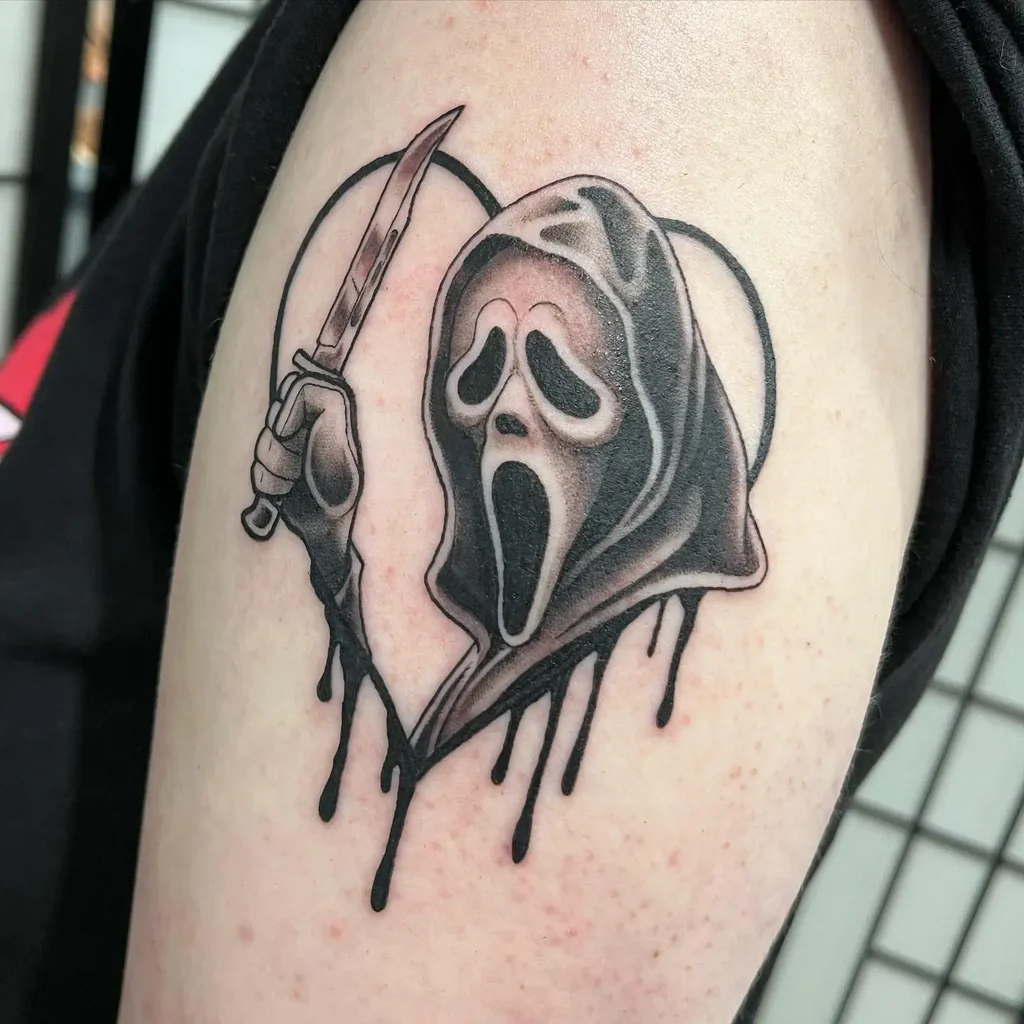
- Wooded setting: Since the killer often hides in the suburban shadows of Woodsboro, the inclusion of dark trees, fog, or flickering streetlights adds context. This works exceptionally well with larger scale sleeves or back pieces.
- Scream Frame: Framing the tattoo in a shape that mimics an old VHS tape or jagged film frame, connecting the design to the franchise’s meta-horror origins.
Placement: Making a Statement with Your Ghostface Tattoo
The decision of where to place the Ghostface tattoo is just as important as the design, which directly impacts the “bravery” factor of being completely terrifying.
1. High Visibility (The Bold Statement)
Choosing sites like the forearm, hand, neck, or shin is a bold commitment that openly exposes the horror.
- Forearm: Excellent for portrait-style ghostfaces, as the smooth, flat area allows detailed realism. The mask faces outwards, directly facing the viewer.
- Calf or shin: Ideal for vertical designs, especially if it involves the full figure of Ghostface or a dynamic motion scene involving a knife and phone cord.
- Hand or finger: Small, minimalist masks or abstract knife outlines work well here, providing a subtle but constantly visible nod to the horror icon.
2. Large Scale (The Masterpiece)
For those who really embrace horror fiction, a large-scale piece allows the artist to create an intense scene.
- Half or full sleeve: Allows integration of multiple Scream elements – house, telephone, mask and victim/killer perspective – creating a cohesive narrative that wraps around the organ.
- Back piece: The final canvas for a grand horror scene, often featuring Ghostface’s full, flowing robes in a dramatic, sweeping pose.
3. Subtle & Intimate (The Personal Fear)
These placements are for the wearer who wishes the terror to remain a personal reflection.
- Ribcage or sternum: a highly personal and often painful placement, perfect for realism or delicate blackwork that captures the emotional scream of the mask.
- Inner Bicep: A discreet placement that allows the wearer to choose when to reveal their fearsome dedication.
Conclusion: The Commitment of the Full Horror Aesthetic
Choosing a Ghostface tattoo is a decision filled with cinematic lore, stylistic commitment, and psychological intrigue. The mask isn’t just scary; It’s intelligent, self-aware, and deeply crazy.
The question, “Are you brave enough to be totally scared?” It’s not just about whether you can bear the scary image on your skin. It’s about accepting it:
- You are knowingly embracing a symbol of fear: you are permanently displaying a symbol that is designed to cause discomfort and scrutiny.
- You’re committed to the aesthetic: Complete horror requires a dedication to sharp lines, deep shadows, and an uncompromising artistic style (like blackwork realism) that maximizes terror.
- You’re inviting conversation: A prominent ghostface tattoo is a conversation starter — a public proof of your love for the genre and your comfort with its dark themes.
Ultimately, the best ghostface tattoo ideas is one that honors the simple, sinister geometry of the mask while adding personal artistic flair and narrative elements that make the fear truly your own. It’s a work of art that captures the essence of the franchise: the idea that the greatest horror is always personal, and sometimes, it looks just like everyone else.
